Operation Overlord and the 29th Infantry Division
D-Day, June 6, 1944. The invasion of Europe, codenamed Overlord, begins.
Omaha Beach, one of five named beaches on which the invasion forces landed, was by far the bloodiest fighting of the morning. Two divisions landed there, the 1st, a regular Army unit which had seen action in North Africa and Italy; and the 29th, a federalized National Guard unit from the Mid-Atlantic which had not previously seen action.
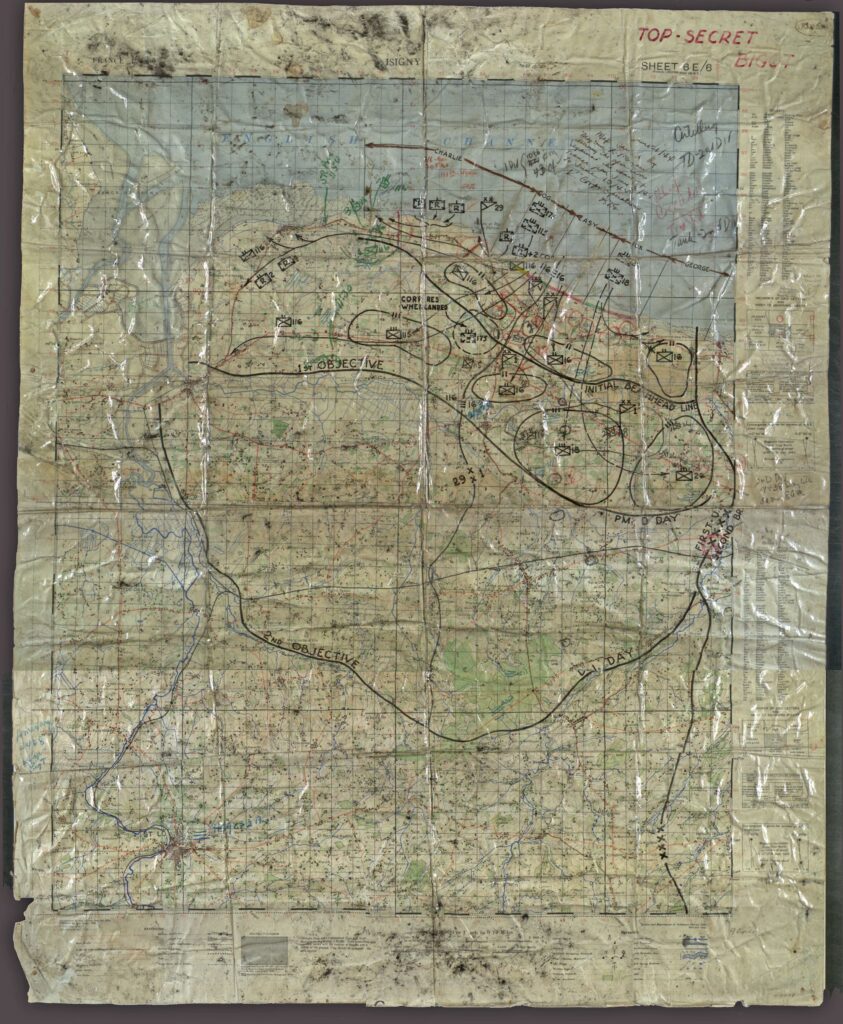
Gen. Leonard Gerow’s map showing Omaha Beach.
This map, which is on long-term loan to the George C. Marshall Foundation from the Virginia Military Institute, is the last corps-level D-Day map. Gen. Leonard Gerow was V Corps commander on Omaha Beach during the invasion, but previously had been commander of the 29th division as they trained in England for the invasion.
On D-Day, Company A of the 116th Regiment, 29th Division landed on the Dog Green section of Omaha Beach, on the western side near the Vierville Draw, a road that would take them inland. It was heavily defended and Company A lost all but one officer and over half of the enlisted men in the first few minutes of the invasion.
The small town of Bedford, VA, home of Company A, lost 19 soldiers on D-Day, and is thought to be the largest per capita of any community in the United States that day.
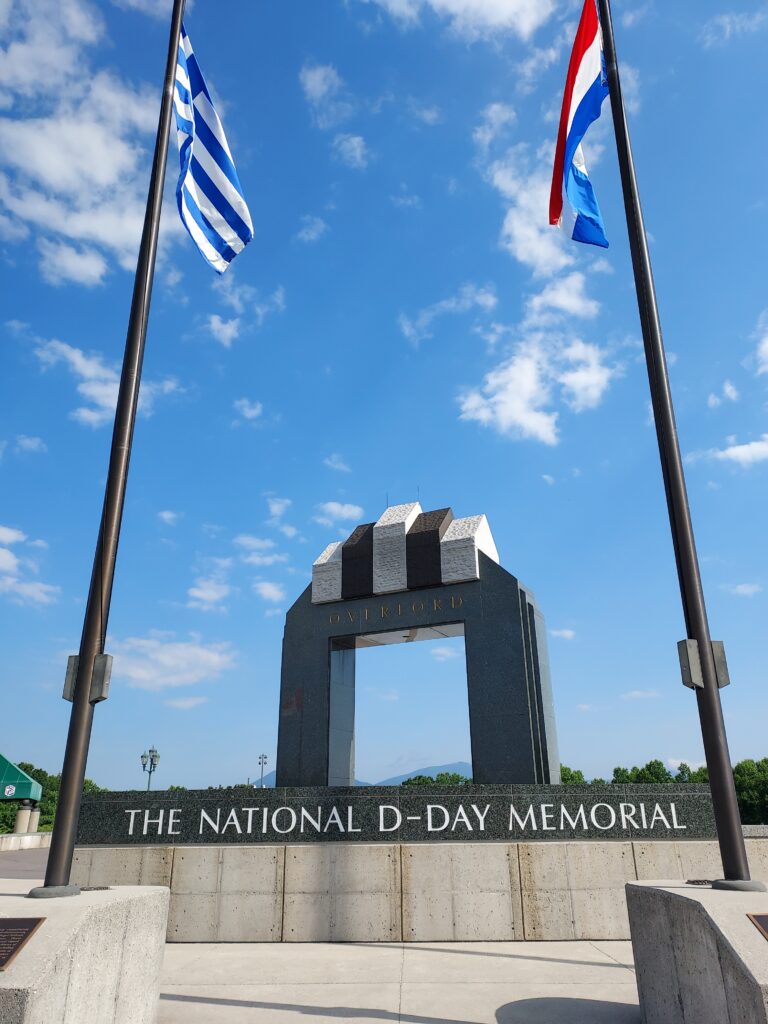
The recognizable Overlord arch at the National D-Day Memorial.
The National D-Day Memorial was dedicated in Bedford June 6, 2001, and holds an annual ceremony for their “Bedford Boys,” the 29th Division, and other military units that sacrificed so much in the invasion.
The memorial features a short history of the 29th Division, and plaques about the companies of the 29th Division on Omaha Beach around a representation of the invasion plans on the beach.
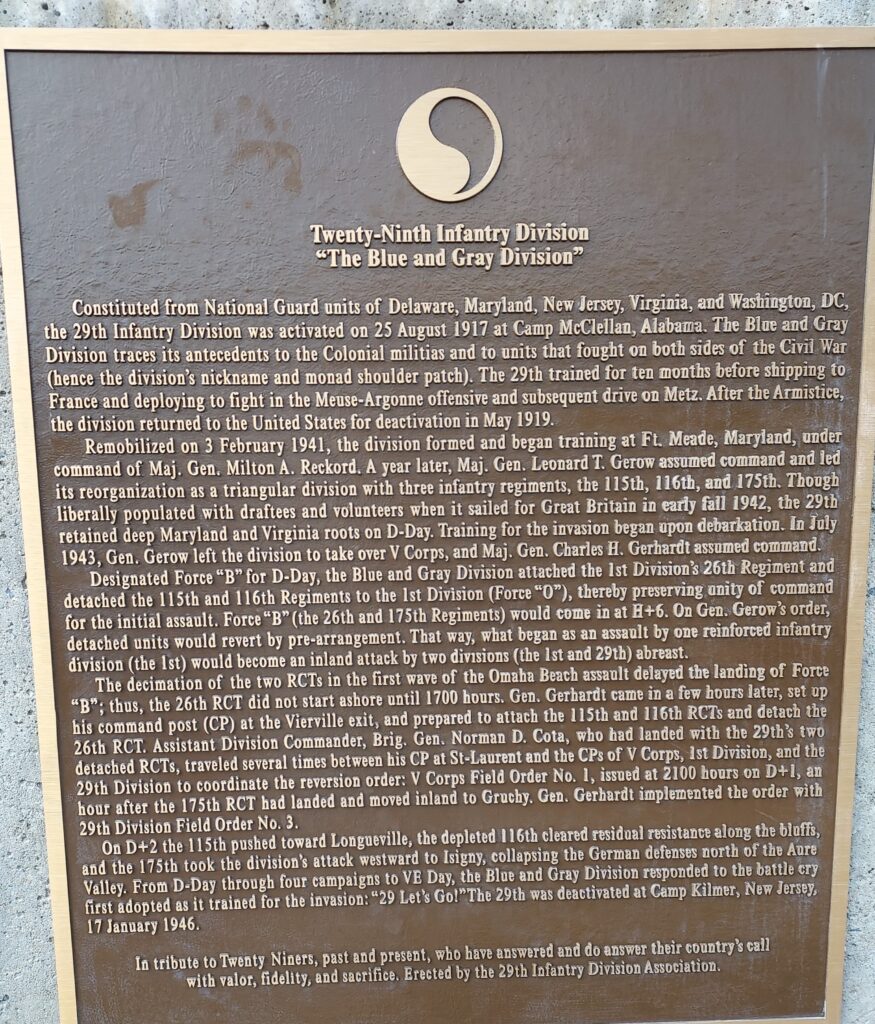
A short history of the 29th Infantry Division
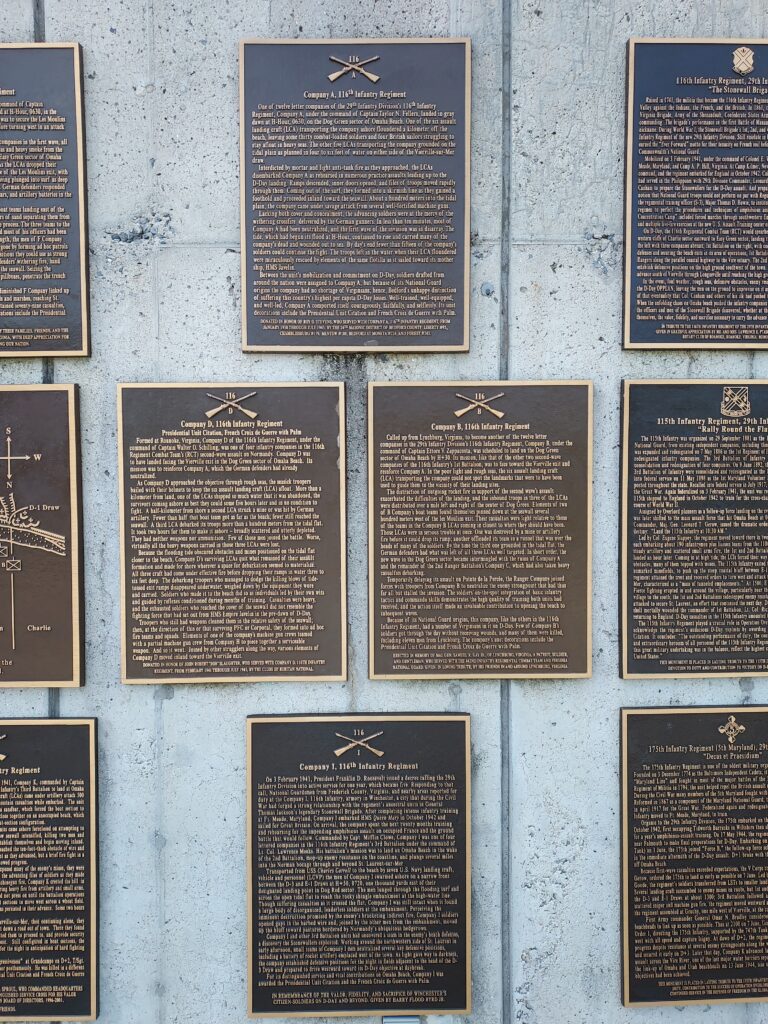
Plaques representing the companies of the 116th Regiment of the 29th Infantry Division.
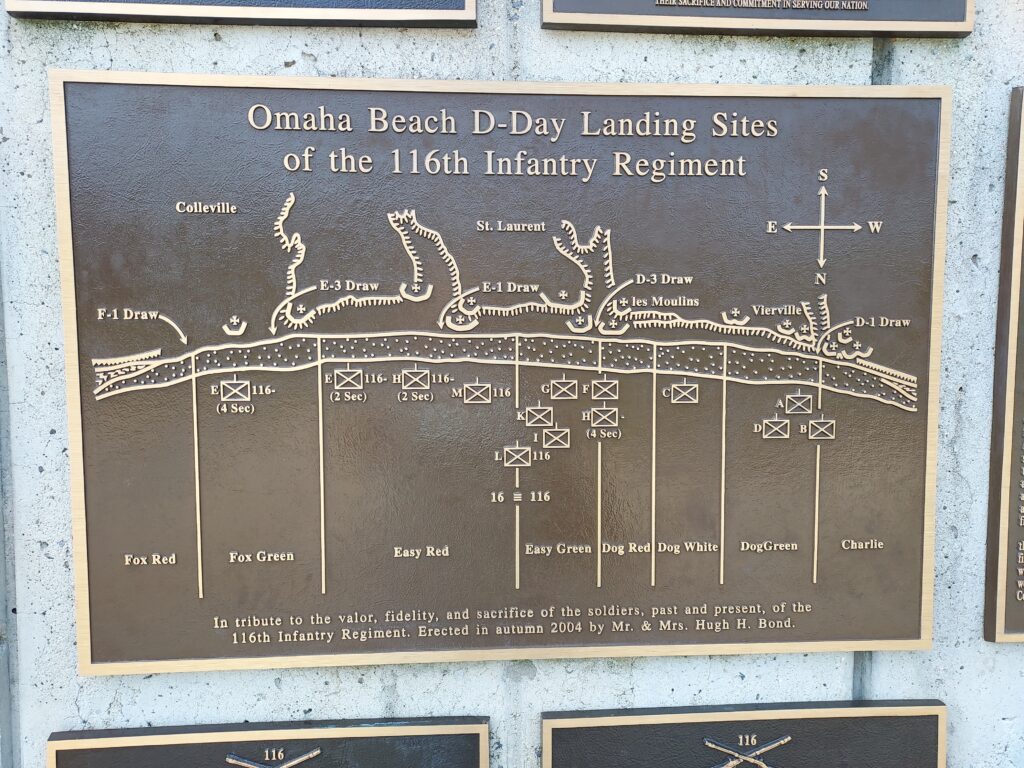
A map noting the landing sites of the companies of the 116th Regiment.
During the D-Day ceremony, wreaths of flowers in the unit’s blue-and-gray patch are laid in memory by the 29th Infantry Division Association members and their families.
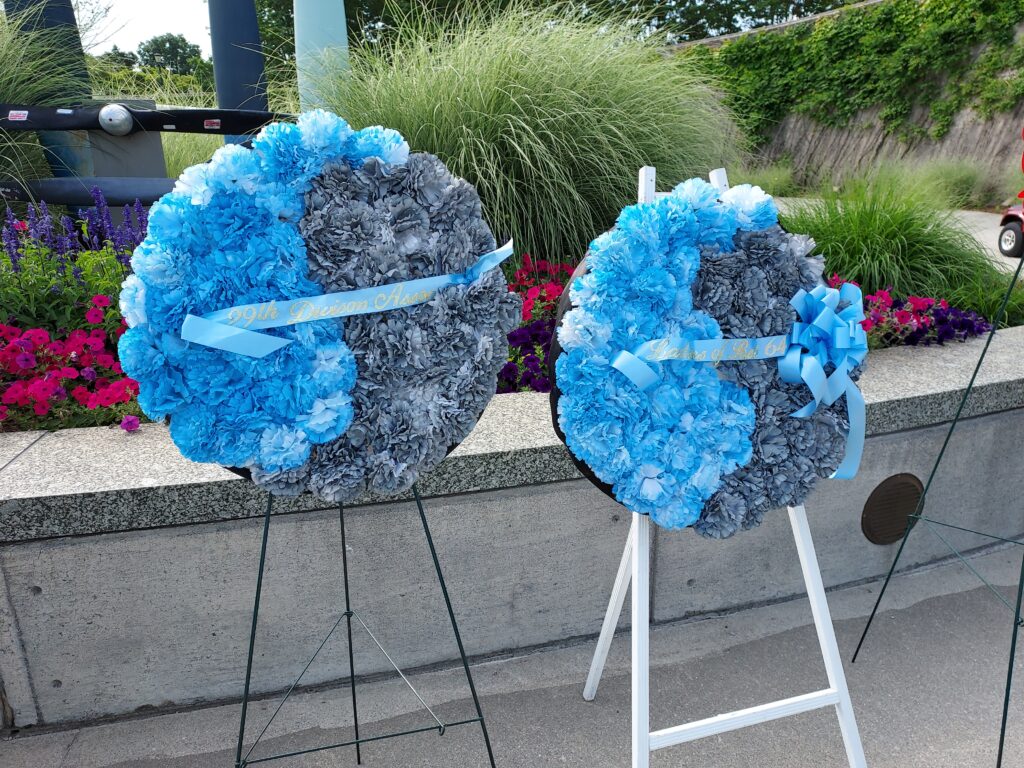
Wreaths modeled after the 29th Division’s patch
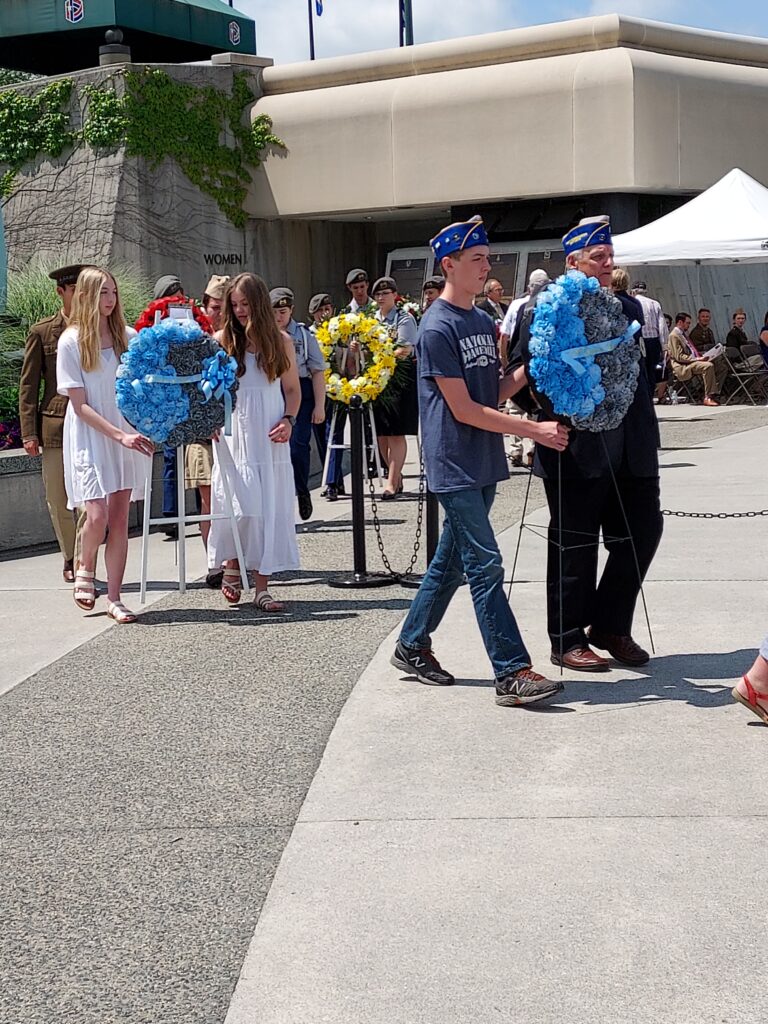
Members of the 29th Infantry Association lay wreaths.
“Homage,” a statue at the memorial, represents all D-Day participants, but has a special connection to Company A twins Ray and Roy Stevens. Before boarding separate landing craft, Ray wanted to shake his brother’s hand to wish him luck. Roy declined, saying they would shake hands after they got to the beach. Roy never got the chance, as Ray died on the beach.
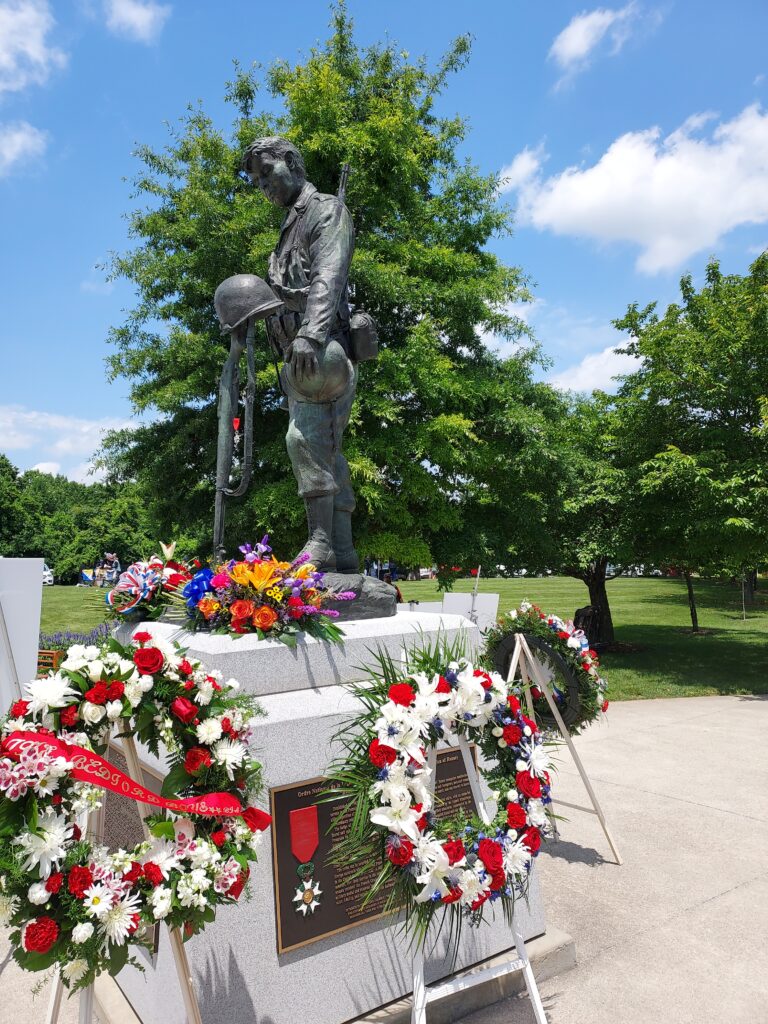
The statue “Homage,” with flowers honoring soldiers on D-Day.
The Memorial Wall contains the names of more than 2.500 U.S. service members killed on D-Day, including those of the Bedford Boys and other units.
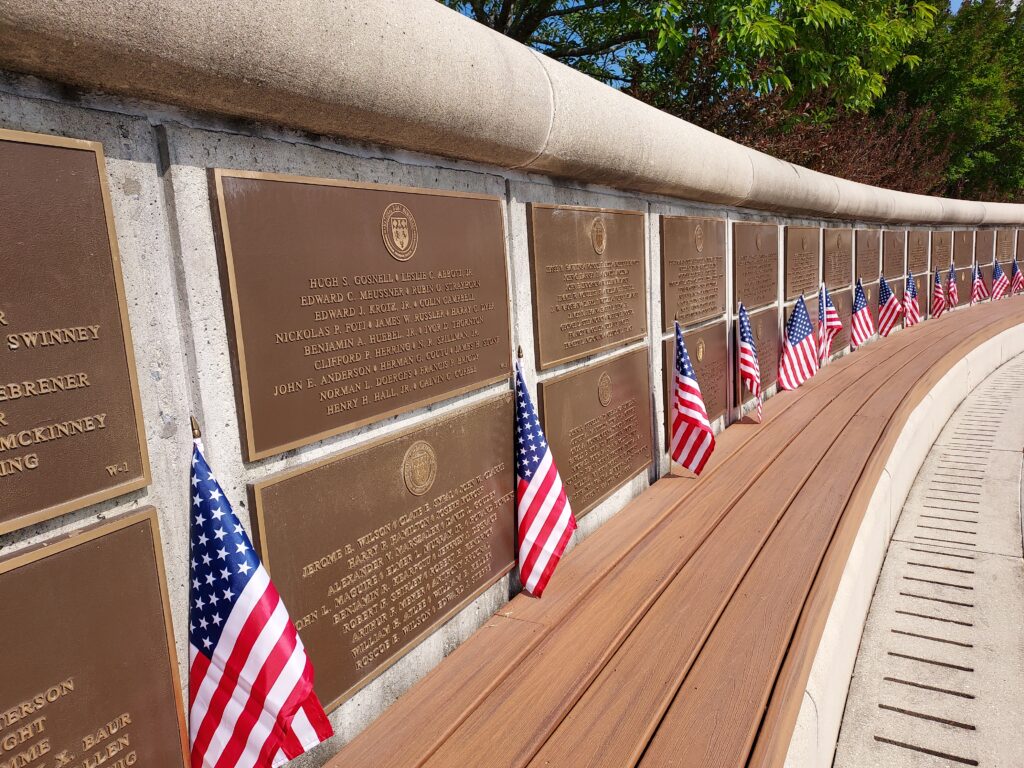
The Memorial Wall
There’s also a Veterans Memorial Walk, with bricks for veterans of many conflicts. Some of the D-Day veterans are remembered with flowers by family and friends.
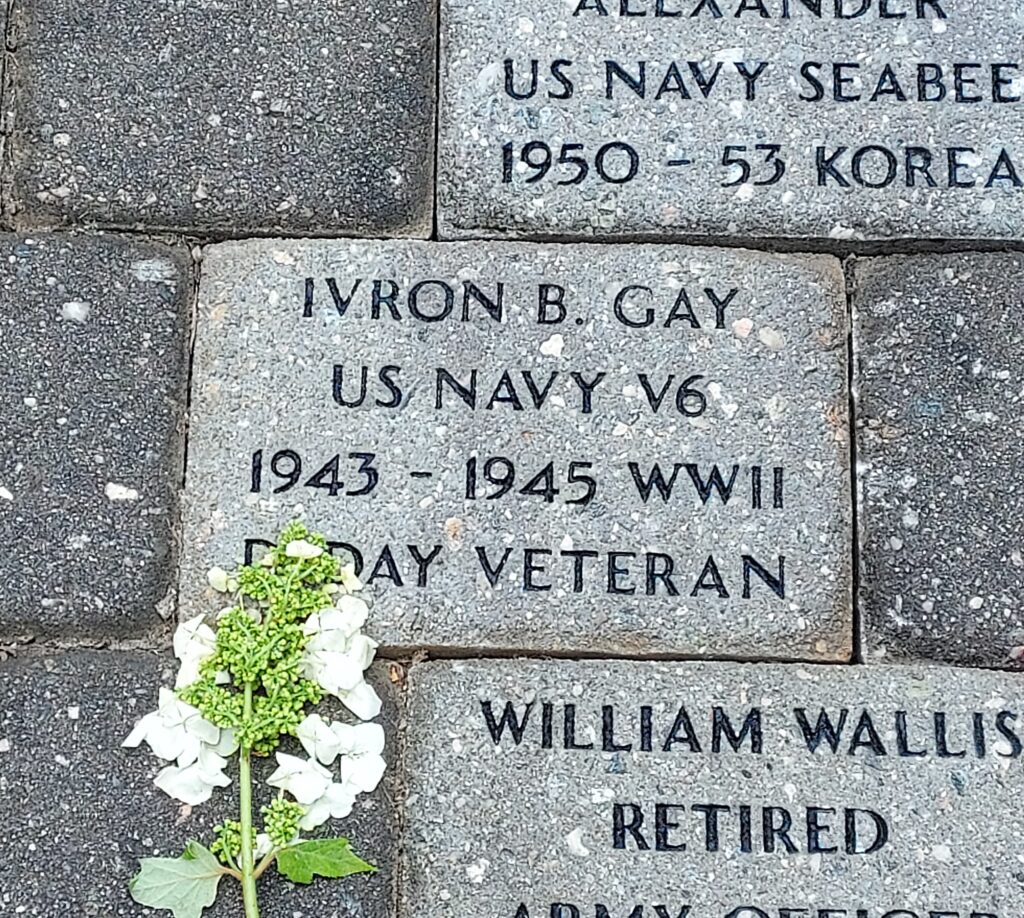
A flower laid in remembrance of a D-Day veteran at the Veterans Memorial Walk.
The 29th Infantry Division is still the National Guard unit in the Mid-Atlantic, and members have served in many conflicts since World War II, including being some of the last troops out of Iraq in 2011.
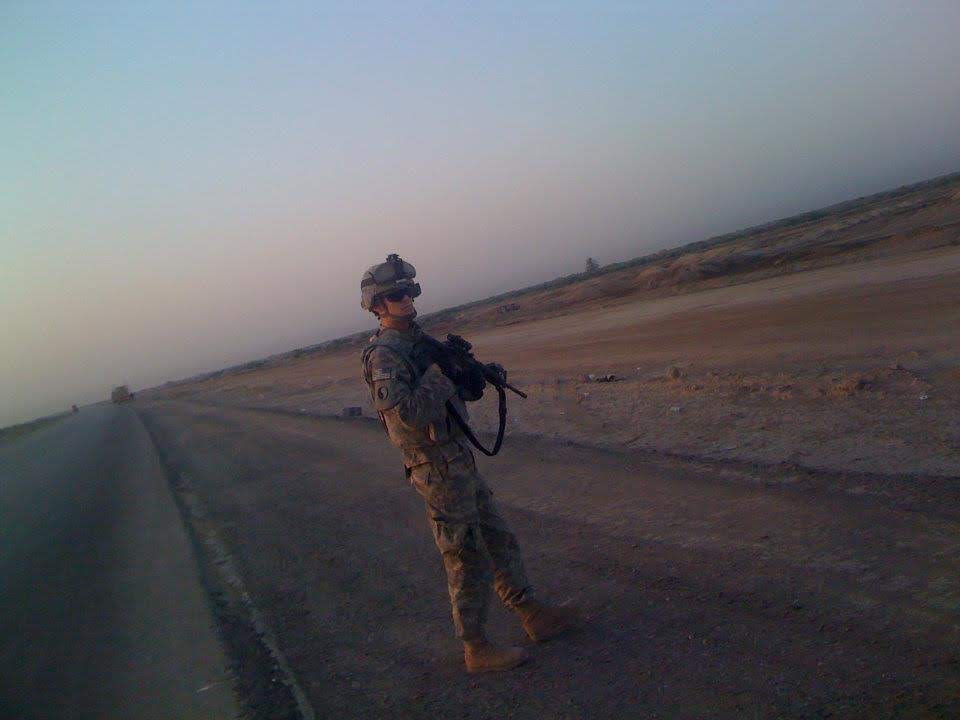
A member of Company C, 116th Regiment on road guard during a convoy stop in Iraq.
Elements of the 29th Division recently returned from a deployment in Kuwait, and unit members are currently serving in Kosovo and the Horn of Africa.
To learn more about Gen. Gerow’s D-Day map, contact [email protected]
To learn more about the National D-Day Memorial, www.dday.org
Before becoming director of library and archives at the George C. Marshall Foundation, Melissa was an academic librarian specializing in history. She and her husband, John, have three grown children, and live in Rockbridge County with two large rescue dogs. Melissa is known as the happiest librarian in the world! Keep up with her @MelissasLibrary.
